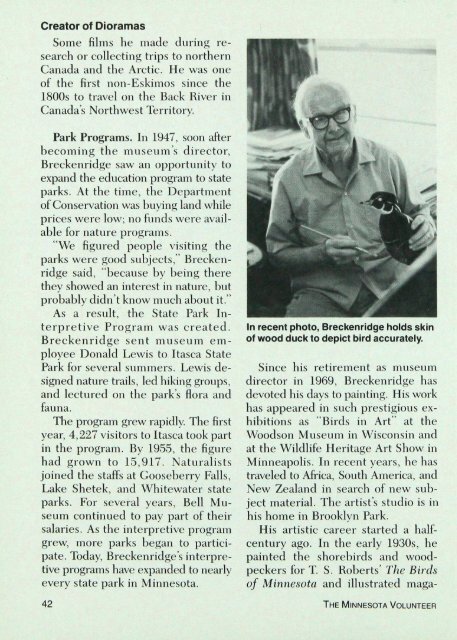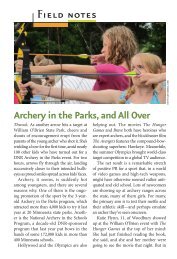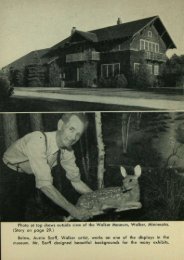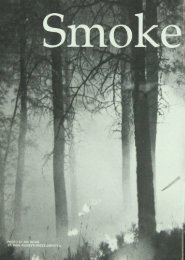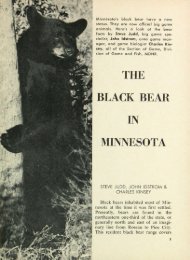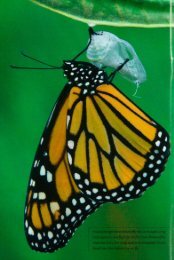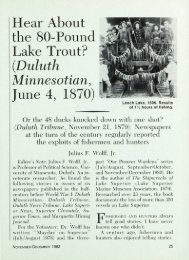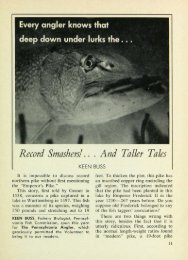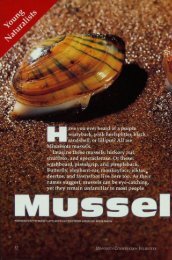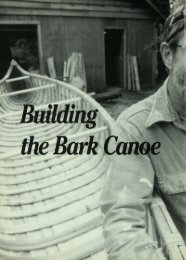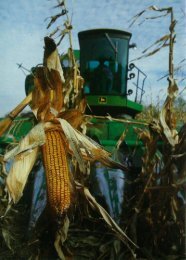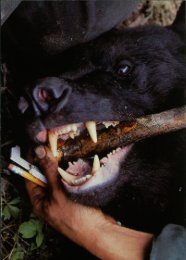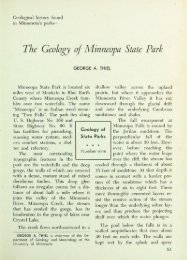218 Bell Museums Creator of Wildlife Dioramas - webapps8
218 Bell Museums Creator of Wildlife Dioramas - webapps8
218 Bell Museums Creator of Wildlife Dioramas - webapps8
Create successful ePaper yourself
Turn your PDF publications into a flip-book with our unique Google optimized e-Paper software.
<strong>Creator</strong> <strong>of</strong> <strong>Dioramas</strong><br />
Some films he made during research<br />
or collecting trips to northern<br />
Canada and the Arctic. He was one<br />
<strong>of</strong> the first non-Eskimos since the<br />
1800s to travel on the Back River in<br />
Canada's Northwest Territory.<br />
Park Programs. In 1947, soon after<br />
becoming the museum's director,<br />
Breckenridge saw an opportunity to<br />
expand the education program to state<br />
parks. At the time, the Department<br />
<strong>of</strong> Conservation was buying land while<br />
prices were low; no funds were available<br />
for nature programs.<br />
"We figured people visiting the<br />
parks were good subjects," Breckenridge<br />
said, "because by being there<br />
they showed an interest in nature, but<br />
probably didn't know much about it."<br />
As a result, the State Park Interpretive<br />
Program was created.<br />
Breckenridge sent museum employee<br />
Donald Lewis to Itasca State<br />
Park for several summers. Lewis designed<br />
nature trails, led hiking groups,<br />
and lectured 011 the park s flora and<br />
fauna.<br />
The program grew rapidly. The first<br />
year, 4,227 visitors to Itasca took part<br />
in the program. By 1955, the figure<br />
had grown to 15,917. Naturalists<br />
joined the staffs at Gooseberry Falls,<br />
Lake Shetek, and Whitewater state<br />
parks. For several years, <strong>Bell</strong> Museum<br />
continued to pay part <strong>of</strong> their<br />
salaries. As the interpretive program<br />
grew, more parks began to participate.<br />
Today, Breckenridge's interpretive<br />
programs have expanded to nearly<br />
every state park in Minnesota.<br />
In recent photo, Breckenridge holds skin<br />
<strong>of</strong> wood duck to depict bird accurately.<br />
Since his retirement as museum<br />
director in 1969, Breckenridge has<br />
devoted his days to painting. His work<br />
has appeared in such prestigious exhibitions<br />
as "Birds in Art at the<br />
Woodson Museum in Wisconsin and<br />
at the <strong>Wildlife</strong> Heritage Art Show in<br />
Minneapolis. In recent years, he has<br />
traveled to Africa, South America, and<br />
New Zealand in search <strong>of</strong> new subject<br />
material. The artist's studio is in<br />
his home in Brooklyn Park.<br />
His artistic career started a halfcentury<br />
ago. In the early 1930s, he<br />
painted the shorebirds and woodpeckers<br />
for T. S. Roberts' The Birds<br />
<strong>of</strong> Minnesota and illustrated maga-<br />
42 THE MINNESOTA VOLUNTEER


